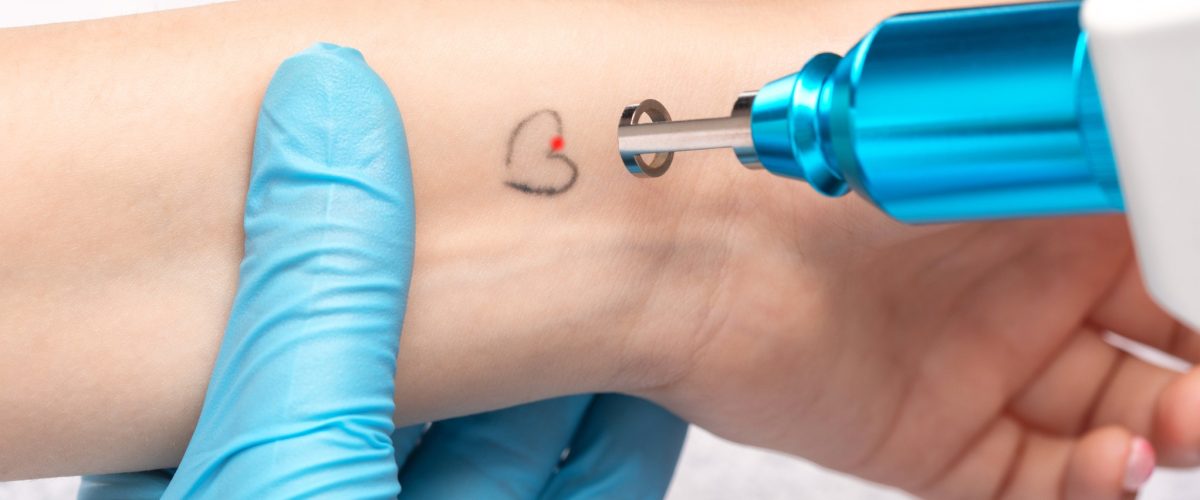Tattoos are often considered a form of self-expression, but they can also lead to regret. Whether due to changing personal tastes, a significant life event, or simply the desire for clearer skin, many individuals seek tattoo removal options. Among the various methods available, laser tattoo removal has emerged as the most effective and popular solution. This article delves into the process, technology, and considerations surrounding laser tattoo removal, providing a comprehensive guide for those looking to regain their skin's natural appearance.
Understanding the Laser Tattoo Removal Process
Laser Tattoo Removal in Dubai involves using concentrated light beams to target and break down the ink particles embedded in the skin. The procedure is typically performed in a clinical setting by trained professionals. During a session, the laser emits specific wavelengths of light that are absorbed by the tattoo ink, causing the particles to fragment. These smaller ink particles can then be naturally eliminated by the body’s immune system.
The effectiveness of laser tattoo removal is influenced by various factors, including the ink color, tattoo depth, and the individual's skin type. For instance, darker inks, such as black and blue, generally respond better to laser treatments than lighter colors, which may require additional sessions for complete removal.
Types of Lasers Used in Tattoo Removal
Different types of lasers are utilized for tattoo removal, each designed to target specific ink colors and skin types. The most common types include:
Q-Switched Lasers
Q-switched lasers are among the most popular choices for tattoo removal. They emit short pulses of high-intensity light, which effectively break down the ink particles without causing significant damage to surrounding skin tissue. These lasers are effective for a range of tattoo colors and are commonly used for both amateur and professional tattoos.
Picosecond Lasers
Picosecond lasers represent a newer advancement in laser technology, offering shorter pulse durations than Q-switched lasers. This allows for more precise targeting of the ink particles, resulting in less heat generated and reduced risk of skin damage. Picosecond lasers can be particularly effective for stubborn colors, making them an appealing option for those with multi-colored tattoos.
The Treatment Experience
Before undergoing laser tattoo removal, a consultation with a qualified professional is essential. During this meeting, the practitioner will assess the tattoo, discuss expectations, and outline the treatment plan. This is also an opportunity for the individual to ask questions and express any concerns.
What to Expect During the Procedure
On the day of the procedure, the area surrounding the tattoo will be cleaned and, if necessary, numbed with a topical anesthetic to minimize discomfort. The laser will then be applied to the tattoo in a series of pulses. Patients often describe the sensation as similar to the snap of a rubber band against the skin.
The duration of a session can vary depending on the size and complexity of the tattoo. Small tattoos may only require a few minutes, while larger tattoos could take longer. After the treatment, some redness and swelling are common but typically subside within a few hours.
Aftercare Following Laser Tattoo Removal
Proper aftercare is crucial for ensuring optimal results and minimizing potential complications. Following the procedure, the treated area should be kept clean and covered as instructed by the practitioner. Avoiding sun exposure is essential, as UV rays can hinder the healing process and lead to pigmentation changes.
Patients may also be advised to avoid certain activities, such as swimming or vigorous exercise, for a short period following the treatment. It’s important to follow all aftercare instructions carefully to promote healing and achieve the best possible outcome.
Multiple Sessions Required
Laser tattoo removal is rarely completed in a single session. Most individuals will require multiple treatments, spaced several weeks apart, to achieve desired results. The number of sessions needed can vary based on the tattoo's size, color, and age. Professionals typically assess progress after each session to determine if additional treatments are necessary.
Potential Side Effects and Considerations
As with any medical procedure, laser tattoo removal can come with risks and side effects. Common side effects include temporary redness, swelling, and blistering of the treated area. In rare cases, individuals may experience changes in skin pigmentation, scarring, or infection.
To mitigate these risks, it’s essential to choose a qualified and experienced practitioner. Ensuring that the clinic follows proper safety protocols and uses the appropriate laser technology is critical to minimizing potential complications.
Conclusion
Laser tattoo removal offers a promising path for those looking to erase their ink and reclaim their skin. With advancements in technology and a better understanding of the process, individuals can achieve significant results with minimal discomfort and downtime. For anyone considering tattoo removal, seeking a professional consultation is the first step towards clear skin and renewed confidence. Embracing this journey can lead to the freedom of self-expression without the burden of regret.





Comments